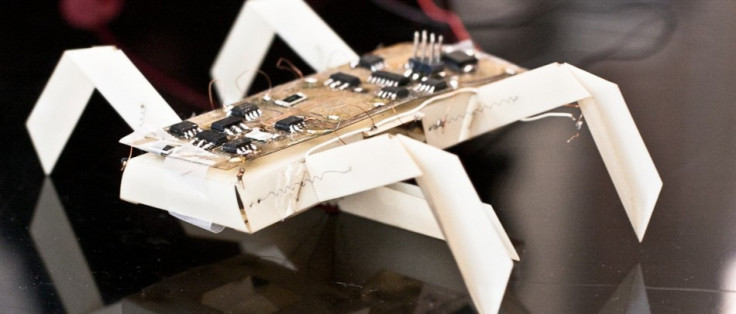MIT Aims For Printable 3D Robots In 5-Year Research Initiative

By now you've probably seen the 3D printers that enable people to print out fully-functional 3D objects, but what if you could print something much more sophisticated -- something that drives on wheels, grips objects or perform other robotic functions?
Well, that technology may be coming much sooner than you'd think.
Researchers at the Massachusetts Institute of Technology (MIT) have announced a five-year research initiative that will eventually enable people to design personalized robots, then have those robots built using three-dimensional printers.
Our goal is to develop technology that enables anyone to manufacture their own customized robot. This is truly a game changer, said Professor Vijay Kumar, who is leading the team from the University of Pennsylvania, in a written statement. It could allow for the rapid design and manufacture of customized goods, and change the way we teach science and technology in high schools.
The project, which is called An Expedition in Computing and Compiling Printable Programmable Machines (ECCPPM), will bring together a team of researchers from MIT, the University of Pennsylvania and Harvard. It's being funded as part of the National Science Foundation's Expeditions in Computing program.
The program aims to automate the process of producing robotics. It currently takes years to program and design a robot. Hardware and software design among other advanced robotic-programming techniques are extremely expensive and time-consuming. The robot-printing project could change that.
Researchers hope to build a platform that enables people to identify a household problem, then head to a printing store, select a blueprint from a library of robotic design, then customize a robotic device. Within 24 hours, the robot would be fully assembled and ready to perform its custom-made duties.
The team is currently focusing on developing an application programing interface (API) for simple function specification -- that way, it will be easy for developers to design robotic functions. They're also creating a new, easy-to-use programming language -- again, to maximize the growth potential of robotic functions.
Rob Wood, an associate professor at Harvard University, summarized the program best in a written statement when he said, This project aims to dramatically reduce the development time for a variety of useful robots, opening the doors to potential applications in manufacturing, education, personalized health care and even disaster relief.
© Copyright IBTimes 2024. All rights reserved.





















